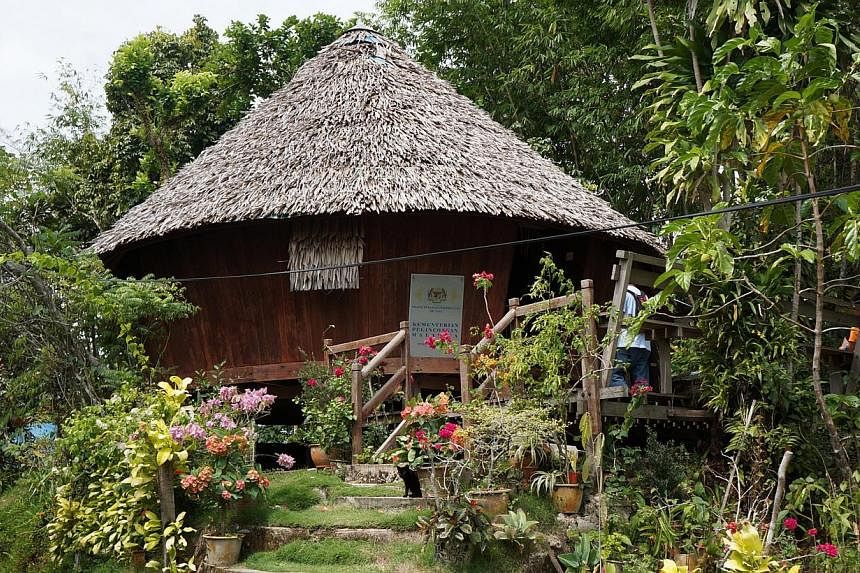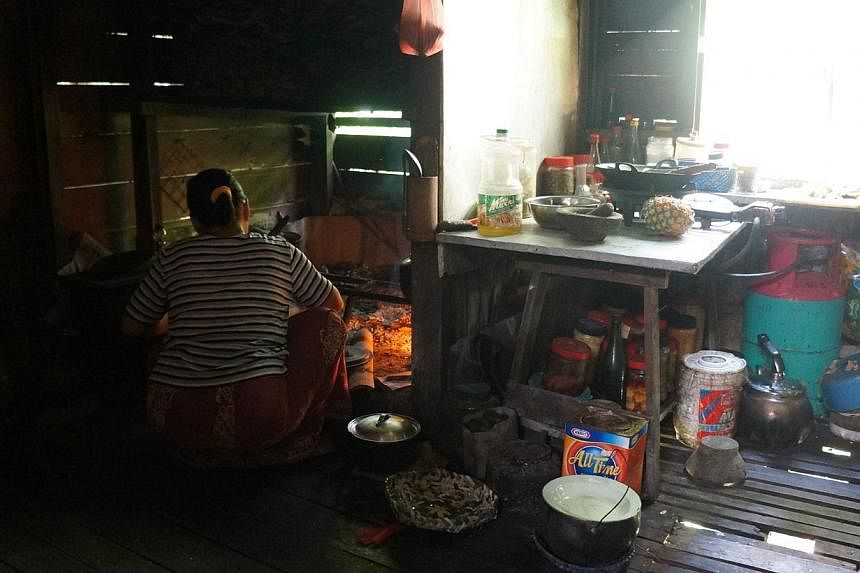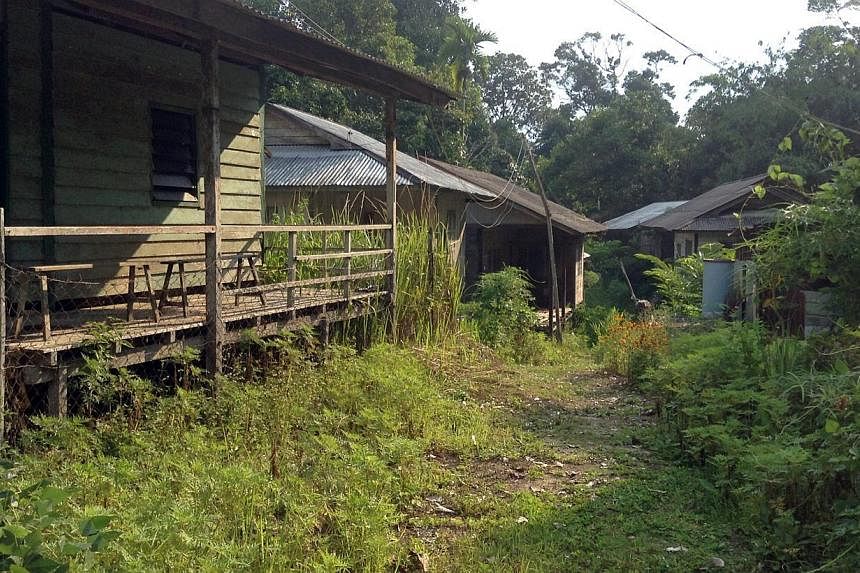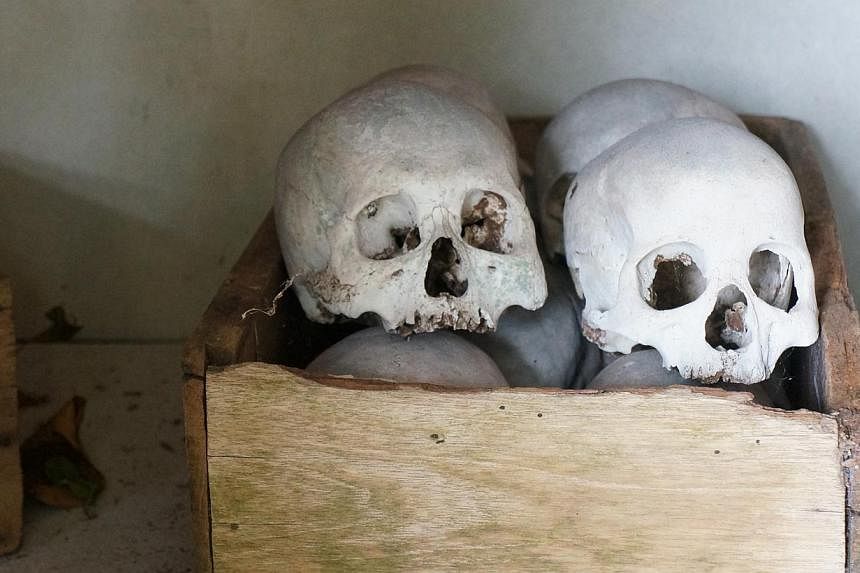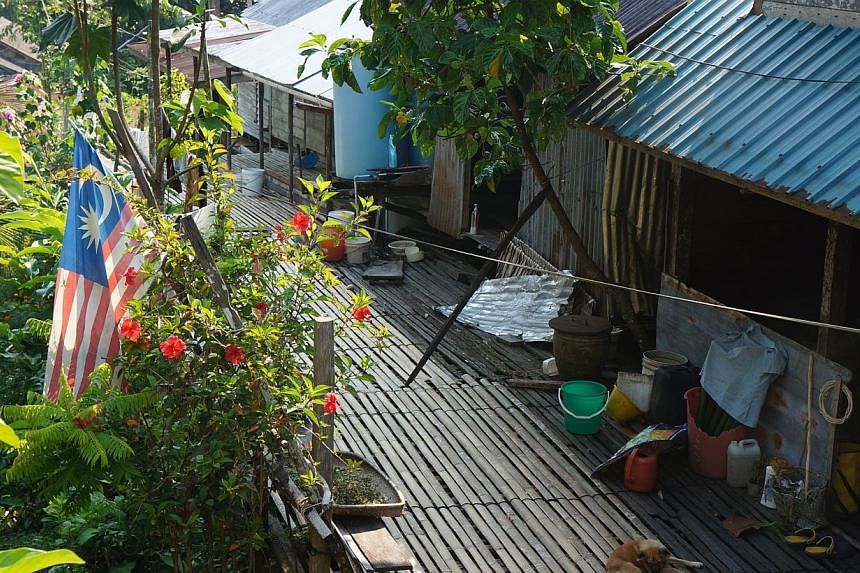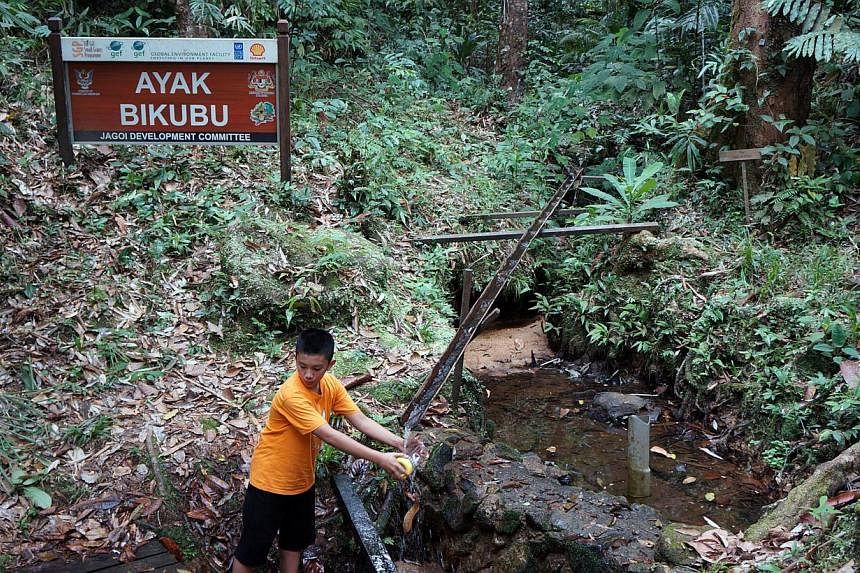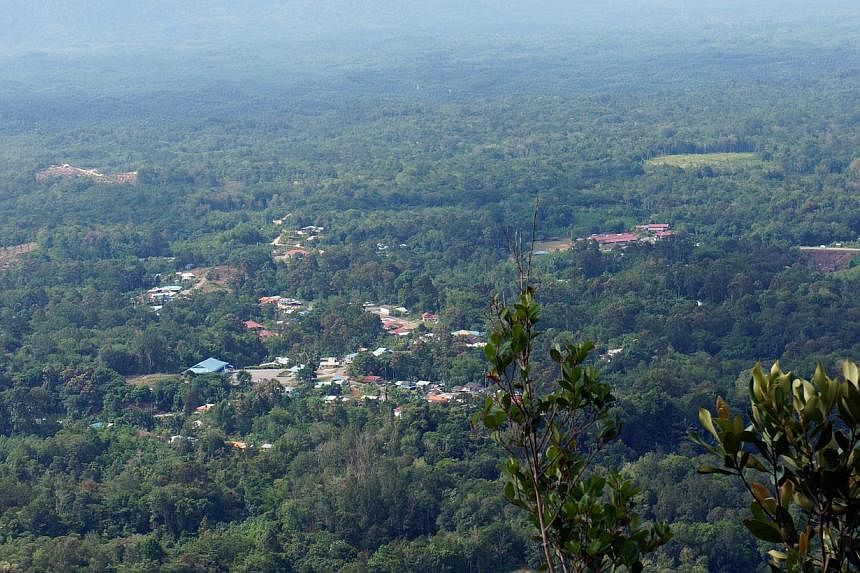She heaved up her rattan basket, supporting its weight with a rope belt strapped around her forehead, and made her way slowly up the steep path.
"Another 700 steps to go," she said as she reached the last stretch, which would lead to a village at Bung Jagoi, atop a mountain in the Malaysian state of Sarawak on Borneo island.
Filled with food, the basket weighed a good 20kg. Inside, she had also packed wild durian and pineapples foraged along the way.
Most people would find it hard to walk up this jungle path even if they were empty-handed. Ms Jema ak Nopis has been doing it with a full load for more than half a century.
She now lives alone at the village. Once, it was thriving, but since the 1990s, other residents have left, finding lowland towns more convenient.
Some see Ms Jema as a guardian of her people's culture. Now 67, she was born in the village, and her presence there helps keep alive the customs of the Jagoi-Bratak peoples, who form a sub-group of the Bidayuh, one of the larger ethnic groups in Sarawak.
The village lies just about an hour from the capital of Kuching and near the border with Indonesian Kalimantan. Regarded as the ancestral home of the Jagoi-Bratak, it has become a focal point for efforts by the local people to preserve their culture and heritage in a rapidly changing world.

The old village provides a tangible record of their migration patterns and movements, and tells how this ethnic group was formed.
"It is important for our people to know their heritage and where they came from. Gunung Jagoi is the ancestral home for many villages in the area," said archaeologist Nicholas Gani at Universiti Malaysia Sarawak. His grandmother once lived on the mountain, but the family moved when she was a teenager.
Mr Gani, 32, said it was also important to preserve the old settlement to protect the forested hills, which are at risk from logging and quarrying.
Ms Jema's house is almost like a mini museum. The solid wooden structure is filled with sepia photographs and dusty artefacts from times long past, including items used by her late mother to perform the Gawai ceremony before the start of padi planting.
The kitchen has a gas stove - the gas tank was carried up the mountain on someone's back - and a firewood hearth for cooking. Ms Jema buys rice and other staples from the nearest town and plants her own vegetables.
When night falls, the darkness is broken only by a kerosene lamp and solar-powered lights. Rain and nearby streams provide water, and phone reception is available, sometimes.
According to records, the Jagoi-Bratak first settled at another mountaintop village, called Bung Bratak, about 750 years ago, after they migrated from Mount Sungkong in Kalimantan.
Around 200 years ago, they moved to Bung Jagoi, following fierce wars with the Iban people from the Skrang area.
At that time, wars frequently broke out between communities, and headhunting was commonly practised.
According to local history, in 1837, the Skrang Ibans invaded the Jagoi-Bratak Bidayuh settlement, killing more than 2,000 men and taking 1,000 women captive. Tales of the attack have become the stuff of legend, giving a special place in history to this highland settlement.
The village, located on a plateau on Gunung Jagoi, became their new home but, eventually, they found it too small. Some began to migrate to the lowlands, where they had farms. The last villagers left in the 1990s.
Of the 34 houses that once stood there, only 13 remain. The silence is pervasive - broken only when the wind, birds and insects make their presence felt, or by the creaking of the disconcertingly springy bamboo walkway.
With so many people having moved downhill over the past two centuries, between 13 and 15 villages, half of which are located in Kalimantan, can trace their roots to the Bung Jagoi village.
This type of migration is common in Sarawak. Mountain settlements do get abandoned as people move to more convenient locations - the process is still ongoing in other parts of the state.
A committee of local leaders has agreed to declare the Bung Jagoi area a community reserve, protected from logging, hunting and mining.
One of the committee members, Mr Miseng ak Magin, who is also a local councillor and church elder, can trace his mountain ancestry back seven generations.
He said it was not surprising that people did not want to live in the mountain village because "everything, even a matchstick, has to be carried up there".
Still, he believes it is important to keep their heritage alive, and that includes preserving traditional ceremonies such as Gawai, even if some of the people are now Christian.
Thanks to such efforts, the village has not been reclaimed by the jungle. The wooden baruk (ceremonial house) with its attap roof looks almost new, after having been restored for their annual Gawai ceremony, which was revived about six years ago.
Gawai is known as the Harvest Festival, even though harvest time is just one of many occasions when the ceremony is performed.
This particular Gawai is held annually to appease the spirits of those whose skulls were taken about 200 years ago. The skulls speak of a fierce past, though little of that can be detected now.
Traditionally, the ceremony was a three-day affair, held around the clock, but it is now kept to one day because of the expense.
Today, only a handful of people are considered to have the spiritual ability needed to perform the rituals involved in symbolically cleansing the skulls, using turmeric and coconut oil.
The event is now called Bung Jagoi Day - it is held as much to bring people together as to carry out the ceremony.
Ms Jema is sometimes described as a caretaker of this ancestral village. Others say she remains there to receive the spirit of her mother, who died a few years ago.
She describes her presence in more prosaic terms: "If I move, I do not have a house there (in the villages downhill). If other people still lived up here, I would not want to move. I'm used to it here - we are free."
